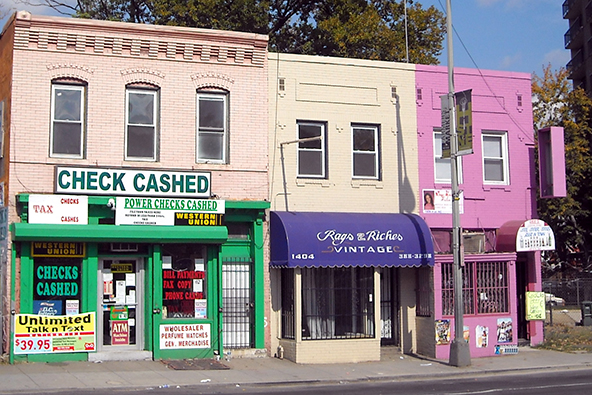Are There Any Alternatives to Payday Lending?

The Sacramento Bee’s Claudia Buck has a great report on the current state of payday lending in the U.S. While primarily focused on her home state of California, Buck covers the latest goings-on in New York, Washington and overseas. Refreshingly, unlike her colleagues in The New York Times and most other newspapers, Buck has actually made a great effort to understand why the industry functions in the way it does and why the fees and interest rates charged by payday lenders are as high as they are.
Yet, most of Buck’s piece is dedicated to payday lending’s dark side — offshore companies lending to U.S. consumers that are very difficult to regulate, domestic lenders, which are not playing by the rules, and outright illegal operations which are stealing borrowers’ personal information, money or both. Still, as I said, that is all great reporting. However, Buck comes up a bit short where all of her colleagues have also failed: while quoting “consumer groups” which are urging borrowers to “consider alternatives to payday loans”, she neglects to mention a single such alternative. Well, isn’t it time that people at least start considering the possibility that for a certain type of borrowers there simply aren’t any alternatives to payday?
Meeting the Online Threat
Much of Buck’s piece is dedicated to the challenges posed by online-based lenders, both domestic and offshore-based, “who aren’t licensed and who increasingly are accused of ripping off consumers”. The ripping off in question can take many different shapes, such as charging higher interest rates than allowed under applicable laws, siphoning off of funds from borrowers’ bank accounts without permission, selling of personal financial information by the lender, even on loans that haven’t been finalized and losing the ability to track lost funds down and prosecute the offending lenders.
Buck tells us that California’s Department of Business Oversight (DBO) has taken action against 11 illegal online lenders located domestically and overseas, in locations like Belize, Costa Rica, Malta and the United Kingdom. The affected U.S.-based lenders have got themselves in trouble for operating without a state license. To help make her point, the author then proceeds to treat us to one particularly lurid story:
Enforcement actions against illegal payday lenders have stepped up recently. A week ago, the Federal Trade Commission announced it shut down a Tampa, Fla.-based payday loan broker accused of pilfering $5 million from U.S. consumers. The company, operating under multiple names such as Loan Tree Advances and Your Loan Funding, said it represented a network of 120 payday lenders and promised to help consumers obtain loans in “as little as one hour.” Instead, according to the FTC’s complaint, it sucked funds from the bank accounts of tens of thousands of customers. The company’s two owners allegedly used the money to support a lavish lifestyle that included a 2012 Maserati, a 2011 Rolls Royce Ghost and a 2006 Ferrari 430.
One might wish that the author had given us a more detailed account of the crime that was allegedly committed, rather than describe the year and make of the cars in the offender’s garage in such detail. Still, it is fairly safe to expect that the broker in question will not be reopening for business anytime soon.
Is There an Alternative?
Buck quotes an industry spokesman who explains the enduring allure of payday loans:
A payday loan is “not always the right answer, but at times it may be the least expensive option for people to turn to,” he said. “For example, if you have two bills for $50 and $75 that are going to be late, those late fees are $35 each. That’s $70.” Instead, a consumer takes out a $125 payday loan to pay off those bills and the fee is only $21.25, or 15 percent of the loan amount. “They make an absolute, short-term, dollar-and-cents choice,” Larsen said. “That’s how people look at it.
That sounds reasonable to me, but not to payday’s critics:
The problem, critics say, is that a payday loan’s short turnaround — typically two weeks — leaves many low-income borrowers unable to repay the full amount and still cover their other household expenses, such as rent, utilities, food, etc. That traps many on a so-called “debt treadmill” — where they continue to take out new payday loans to cover their bills.
But here is a question for you: how is it payday lenders’ fault that the borrowers at issue are low-income? More importantly, who would serve their financial needs should payday lenders be prevented from doing it on terms that make sense for them? I am yet to hear a coherent answer to the last question and I didn’t get one in Buck’s piece, either. The closer she gets to meeting the challenge is here:
Consumer groups urge financially stressed individuals to consider alternatives to payday loans. And state officials are simply trying to get the word out: Before you take out a payday loan, check to be sure the company is licensed.
But the author wouldn’t tell us what these alternatives are. And for a good reason — there aren’t any alternatives to payday loans for the unbanked consumers who make up the bulk of this industry’s clients. It’s a very simple system: super-prime consumers get lower interest rates than prime consumers who, in turn, get lower rates than sub-prime consumers. Finally, borrowers at the lowest end of the credit-ratings spectrum are shut out of the mainstream lending system altogether, because no bank can make lending to them a viable operation at terms even remotely approaching what the other borrowers get. Rather than risk the even closer scrutiny of their regulators over “excessively-high interest rates”, the banks take the safer route and simply ignore the segment, leaving it to the specialists. I’ve always thought that this was a point salient enough to be seen by everyone who would think about the issue for a moment, but evidently this isn’t the case.
The Takeaway
Payday lenders are perhaps under the fiercest attack ever launched against them and we don’t know how the industry will look like when the dust settles. One encouraging sign is that federal legislators seem to understand what most commentators refuse to grasp and have defeated a payday loan reform bill that would very likely have done immense harm to the country’s most disadvantaged borrowers. And there are too many of them to be ignored. Just in California, 1.7 million consumers took out $3.28 billion in payday loans in 2011. No one else would have lent so much money to the least creditworthy borrowers.
Image credit: Wikimedia Commons.


